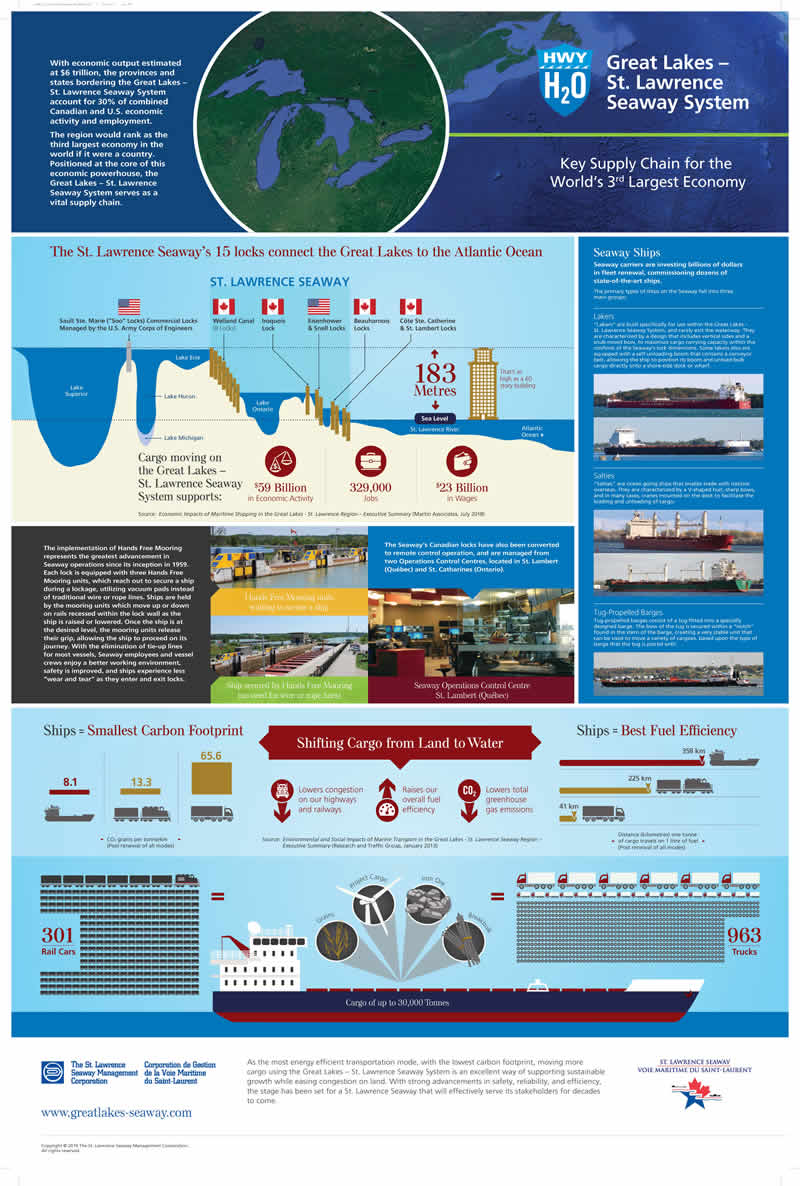A Vital Waterway
The Great Lakes and St. Lawrence River have been major North American trade arteries since long before the U.S. or Canada achieved nationhood. Today, this integrated navigation system serves miners, farmers, factory workers and commercial interests from the western prairies to the eastern seaboard.
Virtually every commodity imaginable moves on the Great Lakes Seaway System. Annual commerce on the System exceeds 200 million net tons (180 million metric tons), and there is still ample room for growth. Some commodities are dominant:
- Iron ore for the steel industry
- Coal for power generation and steel production
- Limestone for construction and steel industries
- Grain for overseas markets
- General cargo, such as iron and steel products and heavy machinery
- Cement, salt and stone aggregates for agriculture and industry
===============================================================
Interested in shipping cargo on our system? Please consult www.hwyh2o.com for more information.
===============================================================
The primary carrier vessels fall into three main groups: the resident Great Lakes bulk carriers or "lakers"; ocean ships or "salties"; and tug-propelled barges. U.S. and Canadian lakers move cargo among Great Lakes ports, with both nations' laws reserving domestic commerce to their own flag carriers. Salties flying the flags of other nations connect the Lakes with all parts of the world.
To realize the magnitude of this commerce, consider the impact of some typical cargoes:
- One 1000-foot-long Great Lakes vessel carries enough iron ore to operate a giant steel mill for more than four days.
- A similar "super laker" carries enough coal to power Greater Detroit for one day.
- A Seaway-size vessel moves enough wheat to make bread for every resident of New York City for nearly a month.
For every ton of cargo, there are scores - often hundreds - of human faces behind the scenes. On board, there are the mariners themselves, while shore side there are lock operators and longshoremen, vessel agents and freight forwarders, ship chandlers and shipyard workers, stevedores and terminal operators, Coast Guard personnel and port officials, railroad workers and truck drivers - a wide web of service providers.
Opened to navigation in 1959, the St. Lawrence Seaway part of the system has moved more than 2.5 billion metric tons of cargo in 50 years, with an estimated value of more than $375 billion. Almost 25 percent of this cargo travels to and from overseas ports, especially Europe, South America, the Middle East, and Africa.
From Great Lakes / Seaway ports, a multi-modal transportation network fans out across the continent. More than 40 provincial and interstate highways and nearly 30 rail lines link the 15 major ports of the system and 50 regional ports with consumers, products and industries all over North America.


